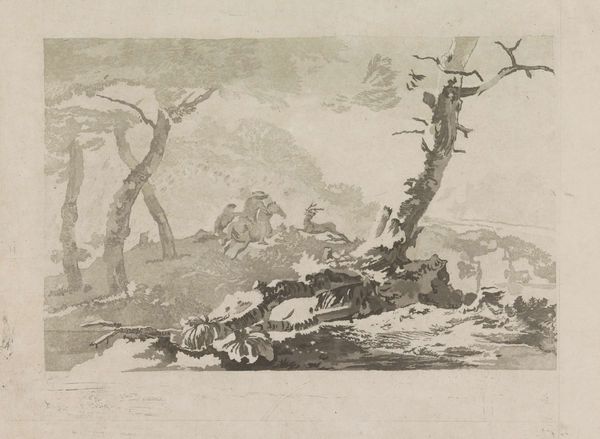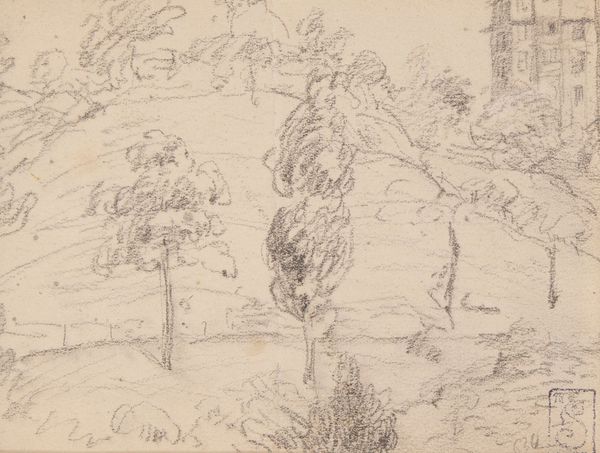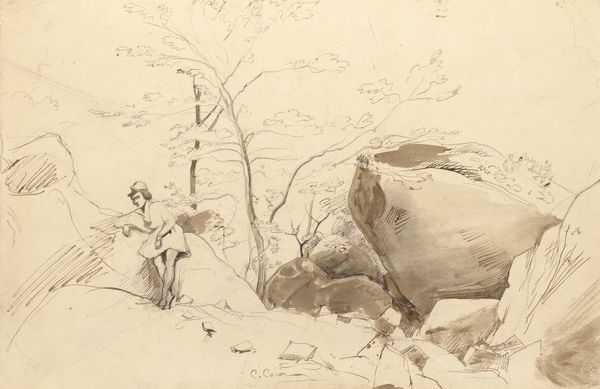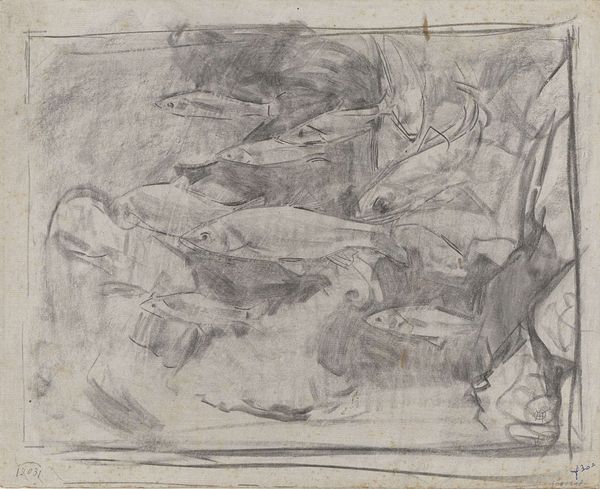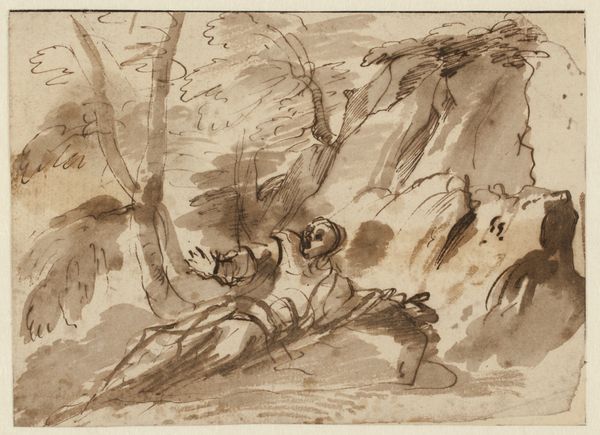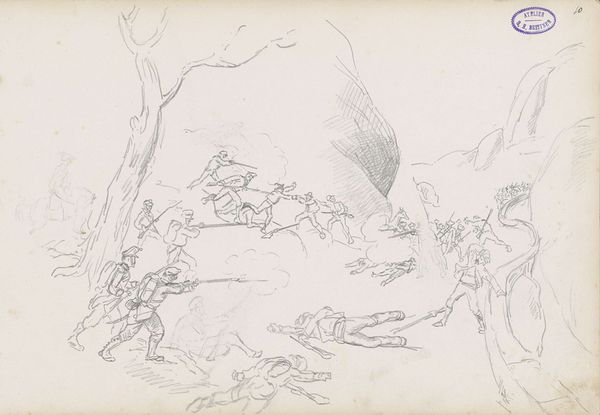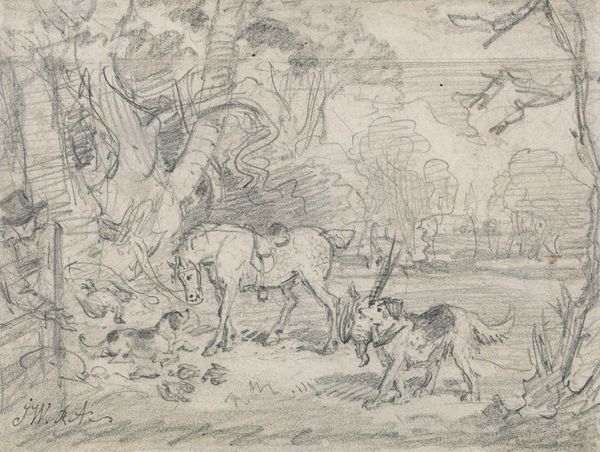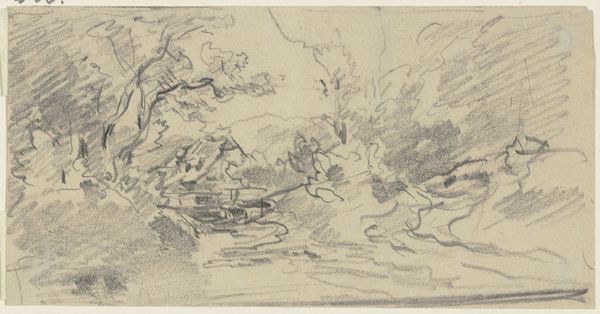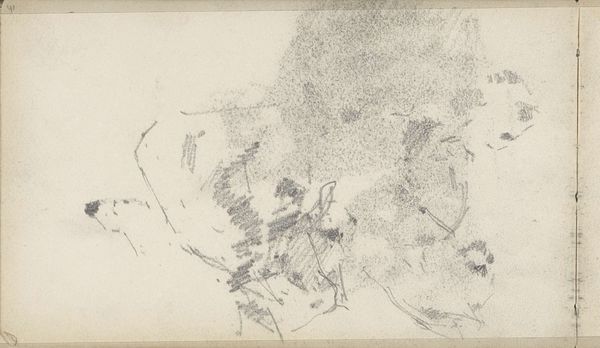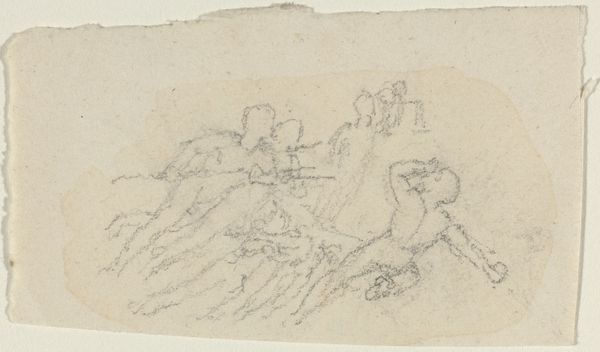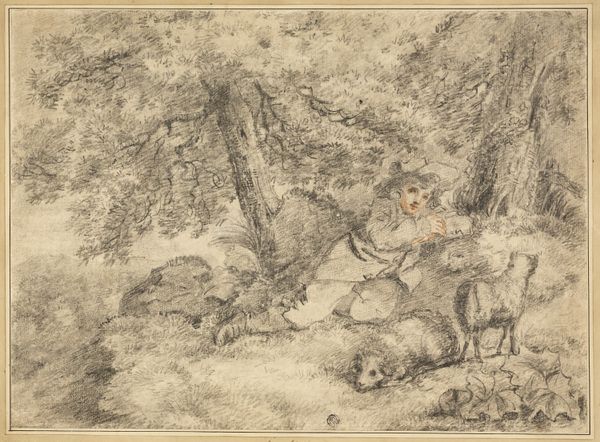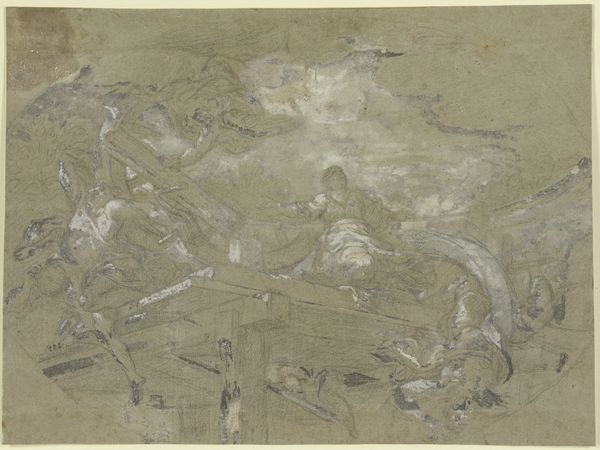
Copyright: Public Domain: Artvee
Editor: Here we have "Don Quixote Defeated by the Windmill", a pastel drawing made around the 1780s by Jean-Honoré Fragonard. It feels a little chaotic and definitely comedic with its depiction of a battle scene gone wrong. What are your initial thoughts about the piece? Curator: Well, situating this work in the context of late 18th-century France, it’s fascinating to consider Fragonard's choice of subject matter. The Quixote story was quite popular, but how does this drawing participate in or critique the evolving social role of art and imagery during this period of social upheaval? Do you think it elevates or mocks its subject? Editor: That’s interesting, I hadn’t thought of it in terms of social critique. My first instinct was it's mocking, like the artist wants to highlight the ridiculousness of Don Quixote's romantic ideals, the humor being aimed more towards those ideals, not just the character. Curator: Perhaps, but who is this humor for? We're looking at this through the lens of pre-revolution France, a time where the aristocracy often consumed art with narrative content that both reinforced and poked fun at societal norms. Consider the performative nature of nobility during that period: isn’t there something resonant in Quixote's own performance of knighthood? It suggests a certain tension regarding how images of heroism function in public consciousness. Editor: That's a perspective I hadn't considered before. It makes you wonder about the people who would be looking at it when it was made, what the act of depicting his downfall communicates about the role of leadership or social identity back then, as you were saying. Curator: Exactly. This image invites us to question who shapes public opinion through imagery, and to what end. A lighthearted scene on the surface, but laden with potentially subversive meanings about power. Editor: I see what you mean. Looking at it now, there's definitely a commentary here beyond the simple humor. The more we explore, the richer its meaning seems to become! Curator: Precisely. Analyzing the artwork as part of a bigger social picture gives an all-encompassing depth to its composition, and unearths fascinating questions concerning art's real influence on us and society itself.
Comments
No comments
Be the first to comment and join the conversation on the ultimate creative platform.
